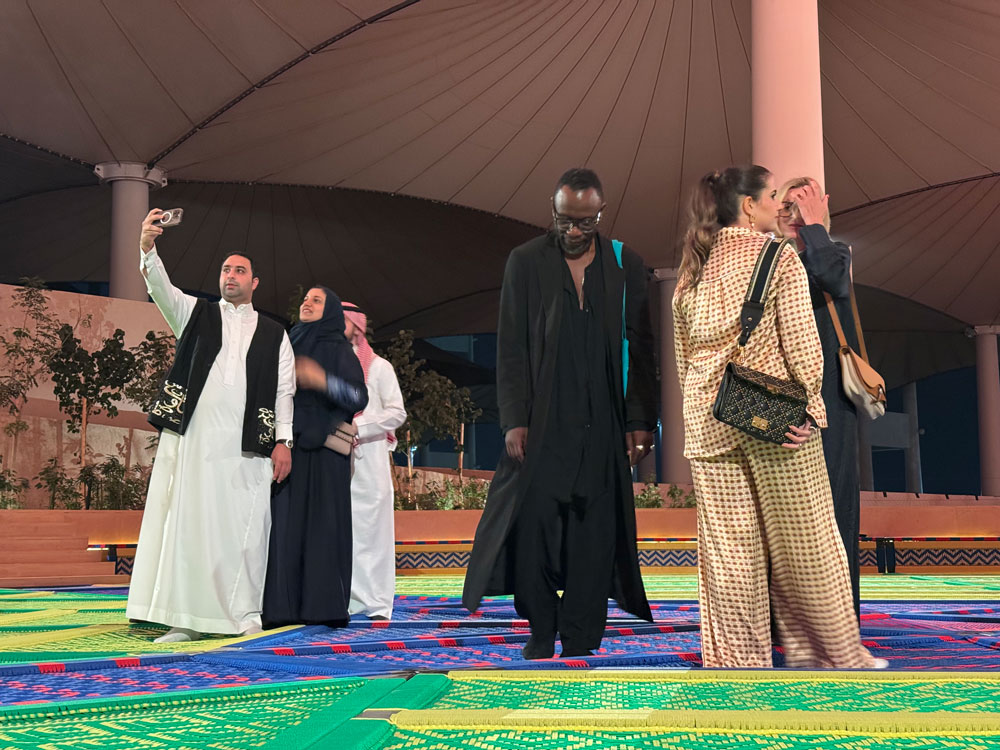LOS ANGELES: “I didn’t want to be just a generic YouTuber who opened up a restaurant,” says
Arab social-media star, Anwar Jibawi, owner of Anwar’s Kitchen. Jibawi has branched out from the world of digital media, opening his own restaurant in Los Angeles — with a second location in the works.
Anwar’s Kitchen is a Middle Eastern fusion restaurant that serves dishes based on recipes first shared with Anwar by his partner in the restaurant business — his mother Amal.
“It’s been my dream to have a restaurant with my mom, so we did that in the middle of a pandemic,” Jibawi tells Arab News. “My mom does all the traditional homemade stuff. I love doing the fusion stuff — and that's our biggest seller. I’m always teasing my mom about that.”
The Palestinian-American influencer had millions of followers on YouTube, Instagram and TikTok before launching his restaurant. He began his online career in 2013 on the short-form video app Vine, and was eventually named one of the 100 most-famous personalities on that platform.
“My first video blew up. That’s why I took it seriously,” he says. “I would’ve probably continued doing it for fun, but once that (happened), I just treated it like a job from the get-go.”
Jibawi started out with comedy sketches filmed at home with his brothers. “I would do a magic trick where I’d disappear from the restroom and appear on the freeway on the toilet,” he says. “And there was no editing or VFX.”
Despite his quick rise to fame, the idea of “influencer” being a profitable career was still in its infancy at that time.
“Nobody understood it,” Jibawi says. “You’re trying to convince people, like, ‘Trust me. This is the future. You can make money.’ Then you go years without making money.”
At one point, he says, his mother “tried kicking me out of the house.” Thankfully — for both of them, and their many fans — that didn’t happen. Instead, Amal would quickly gain first-hand experience of her son’s digital fanbase, and become one of the main guest stars in his videos.
“I put her in the story once and everyone was saying ‘Put her in all your videos!’ I never knew how funny my mom was until I started putting her in the videos,” Jibawi says. “And then I was like, ‘Oh… this is where I get it from.’”
Amal remained a mainstay of her son’s content as he migrated off of Vine during its gradual discontinuation from 2016 and eventual closure in 2019. The pair began making a series of cooking videos on YouTube, which served as the inspiration for Anwar’s Kitchen.
In December 2020, Jibawi announced the opening of the restaurant in a video that has racked up more than 1 million views. But he is aware that there are plenty of skeptics.
“A lot of people think, ‘Oh, this YouTuber’s trying to open up a restaurant. Let’s see what this is about.’ You see a lot of YouTubers open up ghost kitchens,” he says, referring to kitchens that prepare food for delivery or takeout meals, sometimes for multiple brands, without a customer-facing, retail location. “They sell random stuff. I'm not about that. I’m about the quality of the food first and the experience second.”
It seems Jibawi puts the same effort and attention-to-detail into his restaurant as he does into his social-media content. Adam Waheed — Jibawi’s friend, fellow influencer and co-owner of LA eatery Dough Pizzeria — tells Arab News that Anwar’s Kitchen is “one of the best restaurants I’ve ever been to.”
Still, it's clear to most, including Jibawi himself, that Amal is the true perfectionist.
“She’ll take hours on one order,” he says. “Someone could come in and order 40 things on the menu, and my mom'll be, like, ‘Oh no! This is wrong.’ We had to get the chef in and get them on the same page.”
Collaboration has been central to Jibawi’s success, whether with family, fellow content creators or celebrities (he has worked with Mariah Carey, Marlon Wayans, and DJ Khaled, among others). Perhaps his most-famous collab so far, though, has been when he was given the opportunity to direct the former boxing champion Mike Tyson.
“I was scared,” Jibawi admits. “But he’s so cool. Directing him was not as intimidating as it sounds. He's just a super-genuine dude. To me it’s all about the chemistry.”
Jibawi currently works primarily with mobile-first media company Shots Studios for his online content.

In December 2020, Jibawi announced the opening of the restaurant in a video that has racked up more than 1 million views. (Supplied)
“It’s awesome to be one of a handful of Middle Easterners to blow up on the Internet,” he says. He’s keeping that pride in his heritage going in his restaurant by sharing what he calls “a little taste of home” with the people of Los Angeles.
“I see myself nerding out over foodie stuff. I go to these events and conventions, and that’s a new thing for me,” he says.
He plans to continue to expand, but says he will likely keep all locations in the Los Angeles area to ensure that the quality of the food is maintained. So far, the only complaints he recalls is that customers turning up for a meal of Shawarma tacos and Anwar-style fries don’t get to meet the man himself.
“They always miss me!” Jibawi says with a chuckle. “I’m here, I would say, for probably an hour a day.”
So, whether you’re a follower of Jibawi’s content or a foodie looking to try a Palestinian family recipe with a fusion twist, there’s a reason to visit Anwar’s Kitchen.























